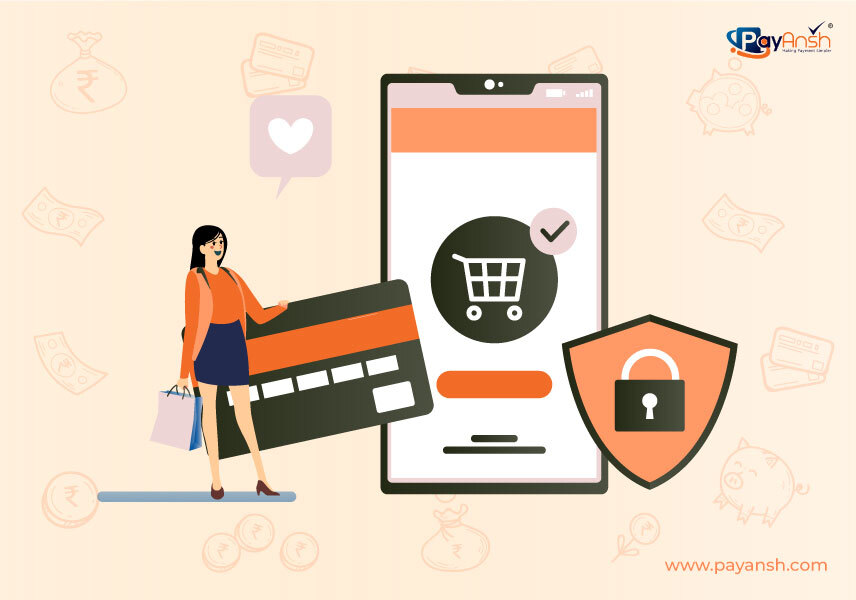Whenever any household buys s
January 01, 20235 Essential Steps to Ensure Your Credit Card Safety When Shopping Online.

Online shopping has become a crucial aspect of our life in
the current digital era. We may acquire goods and services from the convenience
of our homes with only a few clicks. But there are hazards associated with this
convenience, particularly when it comes to safeguarding our credit card data.
Cybercriminals always come up with new strategies to take advantage of flaws
and steal critical data. Therefore, it's essential to take preventative actions
to safeguard our credit cards when making purchases online.
We will go over five crucial actions you may take in this
blog article to protect your credit card information while enjoying the ease of
online shopping. By taking these actions, you may reduce your chance of being a
victim of fraud and guarantee a safe online shopping experience.
Avoid transactions over public WiFi networks
Avoid using your credit card to make purchases via public
Wi-Fi terminals as much as you can because doing so raises the risk of credit
card fraud. Because the networks are public and lack security tools like
spyware and malware, public Wi-Fi systems are relatively insecure. Hackers can
now access crucial information because of this.
Avoid SAVING or STORING credit card information on any website
The most common error made by victims of credit card theft
is saving credit card information online. Avoid doing this because it opens the
door to possible dangers and provides hackers and criminals simple access.
Although continuously entering your credit card information when purchasing
online may seem like a hassle, the effort is completely worthwhile.
Keep a check for SSL encryption
Check the vendor's payment page to see if it supports Secure
Sockets Layer (SSL) encryption before paying with your credit card online. A
closed padlock icon at the top of the page and a URL beginning with
"https:" (s signifies the site is secure) are indicators that the
website is safe. Genuine and secure websites employ SSL technology, which is a
technology used to encrypt information transfer between the retailer's server
and the shopper's device. Your personal and financial information is encrypted
using SSL technology to stop hackers from accessing it. Websites that use SSL
encryption are often reliable and secure.
Regularly review your credit card statements.
Although time-consuming, reviewing your credit card account
after each purchase is a smart habit. This will enable you to recognise any
fraudulent purchases right away and notify the credit card company right away.
A 30-day window is provided to alert the credit card company in the event of
abuse. Further postponement makes the credit card holder responsible for the
transactions, even if they were fraudulent.
Only shop on trusted and known websites only
Avoid impulsive internet searches and only make purchases
from well-known, reputable websites. Black Hat SEO techniques are probably used
by dishonest internet retailers to manipulate search engine rankings, luring
unsuspecting visitors to their websites. It's crucial to examine the URL of the
buying site to confirm the legitimacy of the web address because some phoney
websites may also employ misleading names (for example, amazon.biz versus
amazon.in).
Tips to keep your card and payment safe
- Ø
Install the necessary safety precautions on your
phone, computer, and laptop.
- Ø
Avoid websites that ask for your PIN; legitimate
online retailers simply require your CVV number and a transaction password that
is supplied to your mobile device.
- Ø
Use extreme caution while making online
purchases on your mobile device.
- Ø
Your greatest line of defense when using your
credit card to make purchases online is a secure password. Make secure,
challenging-to-crack passwords for each unique credit card, online shopping,
and banking account.
- Ø
This will assure optimal security since, even if
one of your accounts is compromised, the others will still be secure.
- Ø
Maintain Software and Device Updates: Outdated
software and devices may include flaws that hackers may exploit. Make sure your
online browsers, operating system, and antivirus software are all up to date.
Install security updates and fixes on a regular basis to safeguard against
known vulnerabilities.
- Ø
Set up alerts so you receive instant messages
and/or emails whenever your credit card is used. This way, you can react
quickly in the event of fraud.
- Ø
Change all of your passwords every three to four
months for the best security.
- Ø
Choose safe payment options, such as credit
cards or reputable payment processors like PayPal, while making purchases
online. By letting you challenge erroneous charges and including buyer
protection measures, these payment methods give an extra degree of security.
You can considerably lower the risk of credit card theft and
ensure a safer online shopping experience by putting these five procedures into
practice. To secure your personal and financial information in the digital age,
keep in mind that being proactive and watchful is essential. Educate yourself,
use caution, and shop safely.
.png)
.jpg)
.jpeg)
.jpg)
.jpg)